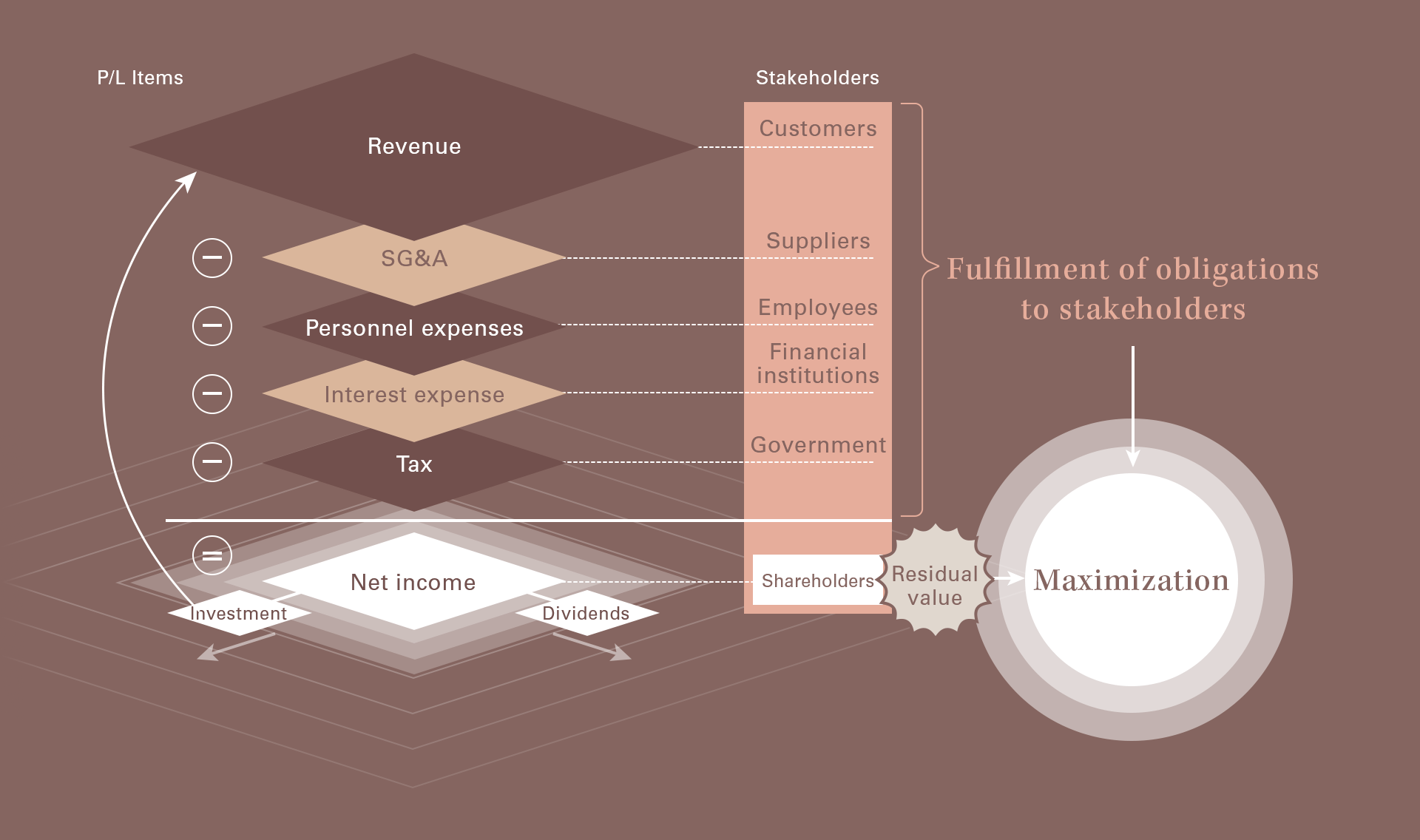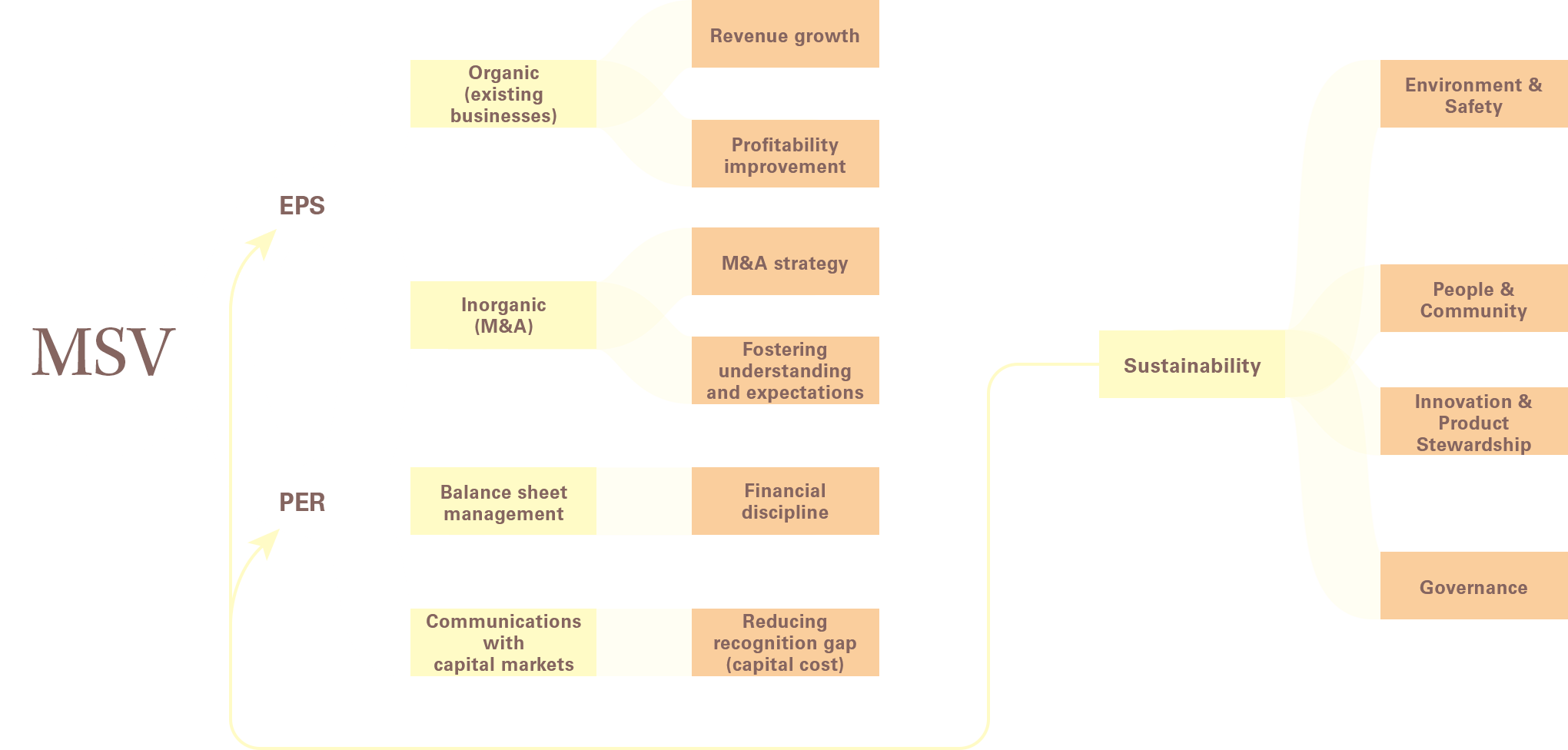Our sole mission: MSV
Nippon Paint Group is pursuing MSV as its sole mission. We will aim to create wealth by maximizing the residual shareholder value that remains after fulfilling our obligations to customers, suppliers, employees, society, and other stakeholders.

The diagram above shows the stakeholder relationship for profit and loss statement items: customers for revenue, suppliers for operating expenses, employees for personnel expenses, financial institutions for interest expenses, and governments for taxes. Fulfilling our obligations to each stakeholder group is the primary premise for MSV. Fulfillment of obligations includes not only legal contracts but also social and ethical obligations, as well as the concept of sustainability.
MSV entails maximizing the residual value that remains after fulfilling obligations to all stakeholders as a way of rewarding shareholders that make an investment with an awareness of the associated risks. A prerequisite is to fulfill those obligations to stakeholders that have upper limits, and shareholder value will be the residual value that remains after fulfilling those obligations. MSV strictly pursues the maximization of medium- and long-term shareholder value, rather than short-term maximization.
MSV logic tree: Actions for achieving MSV
Earnings per Share (EPS) and price-to-earnings ratio (PER) are important benchmarks for achieving MSV. Nippon Paint Group is taking various actions that will contribute to maximizing EPS and PER in order to achieve MSV over the medium and long term.

| Organic (existing businesses) | Revenue growth |
|
|---|---|---|
| Profitability improvement |
|
|
| Inorganic (M&A) | M&A strategy |
|
| Fostering understanding and expectations |
|
|
| Balance sheet management | Financial discipline |
|
| Communications with capital markets | Reducing recognition gap (capital cost) |
|
| Sustainability | Environment & Safety |
|
| People & Community |
|
|
| Innovation & Product Stewardship |
|
|
| Governance |
|
Pages related to Our Business Model
- Integrated Report 2022 (Digital Edition)

